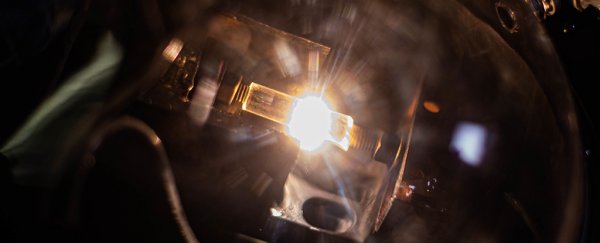Scientists have developed a new technique for turning almost any carbon-based rubbish – from banana skins to car tyres – into graphene flakes, a process that may provide hugely positive environmental impacts.
The 'flash graphene' technique is quick and cheap, and involves heating up waste products to 3,000 Kelvin (2,727 degrees Celsius or 4,940 degrees Fahrenheit). That breaks the carbon bonds inside the target materials, which are then reconstructed as graphene in mere milliseconds.
Not only does this give us ways to make use of trash that would otherwise get thrown away, but it's an efficient and inexpensive way of producing graphene, which can then be used in a variety of eco-friendly ways.
"This is a big deal," says chemist James Tour from Rice University. "The world throws out 30 percent to 40 percent of all food, because it goes bad, and plastic waste is of worldwide concern."
"We've already proven that any solid carbon-based matter, including mixed plastic waste and rubber tyres, can be turned into graphene."
Existing graphene-producing processes result in either low-quality graphene, or high-quality graphene in low volumes. Here, the scientists have been able to develop a technique that gets a decent amount of the good stuff, in a faster time, and at a lower cost.
At the centre of the operation is a method known as Joule heating, where a quick jolt of electricity is used to generate intense heat. It's a process that has previously been used by scientists to create metal nanoparticles.
If graphene can be generated inexpensively, then that means it can be used in more places – to help in the production of cars or clothes, for example, or in cement for binding concrete (a process responsible for around 8 percent of human-made CO2 each year).
"By strengthening concrete with graphene, we could use less concrete for building, and it would cost less to manufacture and less to transport," says Tour. "Essentially, we're trapping greenhouse gases like carbon dioxide and methane that waste food would have emitted in landfills."
"We are converting those carbons into graphene and adding that graphene to concrete, thereby lowering the amount of carbon dioxide generated in concrete manufacture. It's a win-win environmental scenario using graphene."
The technique outlined could help convert materials like waste food, plastic waste, petroleum coke, coal, wood clippings, and biochar into valuable graphene, the researchers say. It should also be relatively easy to scale up.
It's the temperature that's the key – it essentially speeds up the evolution of carbon into its graphite ground state, but also stops that evolution at exactly the right point to harvest high-quality graphene.
No solvents or chemical additives are required for the process, and non-carbon elements are released as gas. What's more, the process produces very little excess heat, and the containing device is cool to the touch just a few seconds afterwards.
Graphene has already proved its worth in a host of applications, covering electronics, manufacturing, and cleaning up pollutants. Now scientists can manufacture it at a lower cost, while reusing materials that would otherwise go to waste.
"Turning trash to treasure is key to the circular economy," says material scientist Rouzbeh Shahsavari from Rice University.
The research has been published in Nature.
